
Visual Art |
Up |
Prev |
Next |
"Turquoise", the hue, is just on the Blue side of Cyan, ie it is just on the Blue side of the Blue/Green border. Things that exhibit this hue include gemstones, the planet Uranus and most famously it is one of the two main hues of the sea.
Good pigments and dyes for bright Turquoise have not been available until quite recently, so it has not been well represented in painting and clothing until now. Duller shades such as Sea Green have been available from combinations of traditional earth colours and verdigris.
Now there are a whole raft of good pigments of this hue, most of which use cobalt mixed with other elements and modified by various other trace elements to give differing hues:
"Cobalt Turquoise", PG50, or more accurately: "Cobalt Titanate Green Spinel", (Co)2TiO4, is light green powder produced by high temperature calcination of a mixture of Cobalt (II) Oxide and Titanium (IV) Oxide in varied ratios creating a crystalline matrix of inverse spinel. It may include any one or more of the modifiers Al2O3, CaO, Cr2O3, Fe2O3, Li2O3, MgO, NiO, Sb2O5, and/or ZnO.
"Cerulean Blue", PB35, is Co2SnO4 an oxide of tin and cobalt.
"Cobalt Chromite Blue Green Spinel" Co(Al,Cr)2O4, PB36, is made by calcining at 2400°F a mixture of Cobalt (II) Oxide, Chromium (III) Oxide, and Aluminum (III) Oxide in varied ratios forming a interdiffused crystalline spinel matrix. Its constitution may also include one or more of the modifiers ZnO, MgO, SiO2, TiO2 and/or ZrO2 to adjust color hue or other properties.
"Zinc Cobalt Chrome Aluminum Spinel", also PB36, is a varied intimate mixture of Zinc (II) Oxide, Chromium (III) Oxide, and Cobalt (II) Oxide calcined at very high temperatures forming an ionically interdiffused crystalline spinel like matrix. MgO, SrO2, TiO2, ZnO and/or ZrO2 may be used as modifiers.
Today there are spectacular pigments that are close in hue to or may be used to mix bright turquoise: Pthalo Green, Pthalo Blue, and others.
| Uranus | Uranus | Missing |
| HSB 200°, 36%, 100% RGB 163, 224, 255 |
 |
 |
| "Uranus" is the colour of the planet Uranus. | Alone among the planets of our Star, Uranus is featureless and uniform in colour. It is so remote that it is not possible to properly observe the colour of this giant planet by Earth based telescope, however, thanks to the wonderful flypast by the Voyager spacecraft we do have accurate colour pictures of the planet. This is its colour. | If you find another natural object of the colour swatch on the left please email me. |
| Turquoise | Turquoise | Copper Benzoate |
| HSB 194°, 100%, 100% RGB 0, 195, 255 |
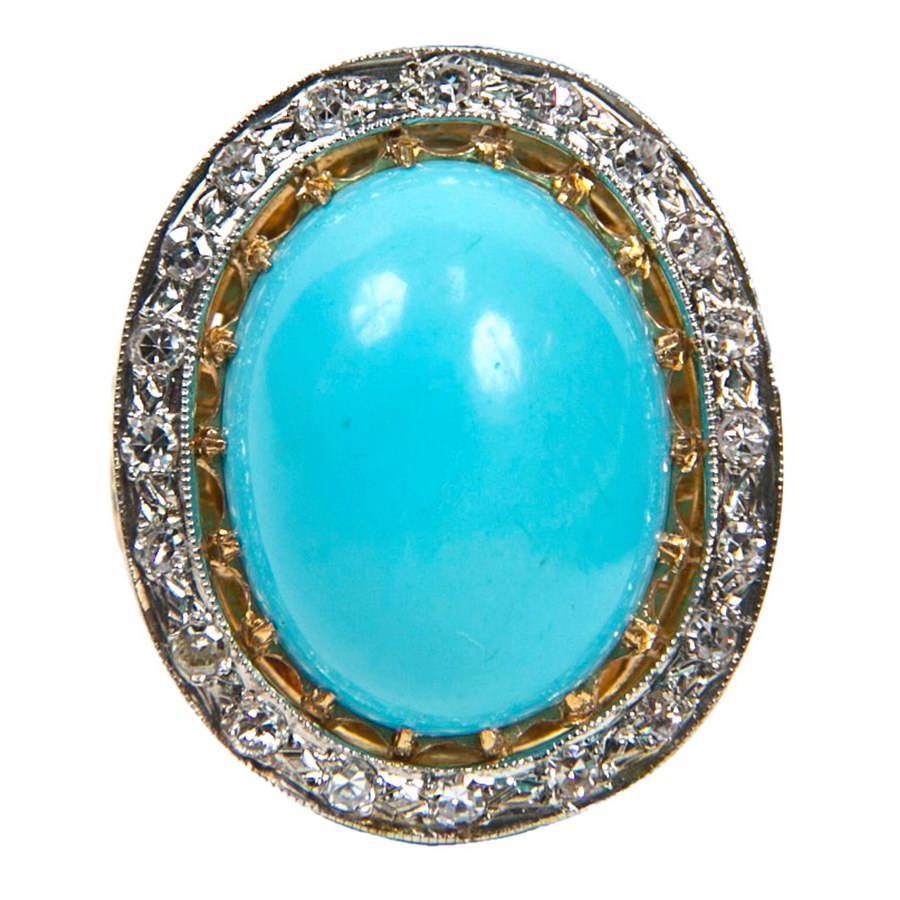 |
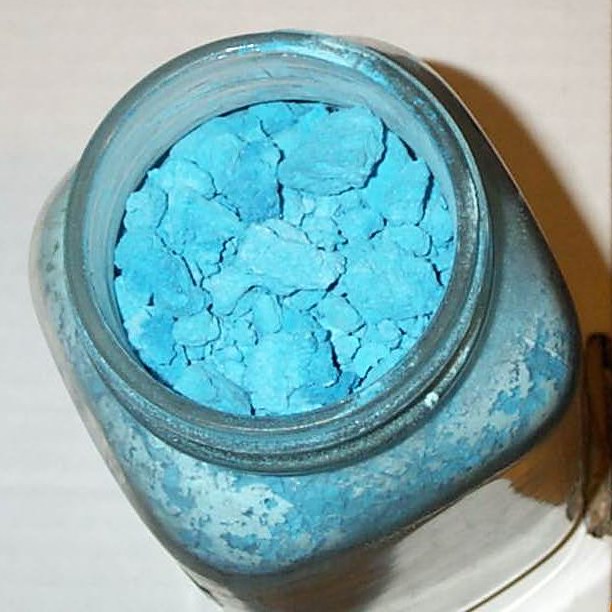 |
| "Turquoise" is the colour of the famous gemstone and also of certain idyllic shallow tropical seas. | Turquoise is a naturally occuring hydrous phosphate of copper and aluminium, and is widely sought after, thanks to its lovely and unusual hue. Turquoise does vary in hue and can quite often be more green than pictured here. Nevertheless this is the classic colour that is most widely associated with the stone. | Copper Benzoate is a salt that is often used in fireworks. Its colour can be weakened depending on the degree of hydration. |
| Blue Topaz | Blue Topaz | Cobalt Topaz Blue |
| HSB 190°, 100%, 72% RGB 0, 153, 184 |
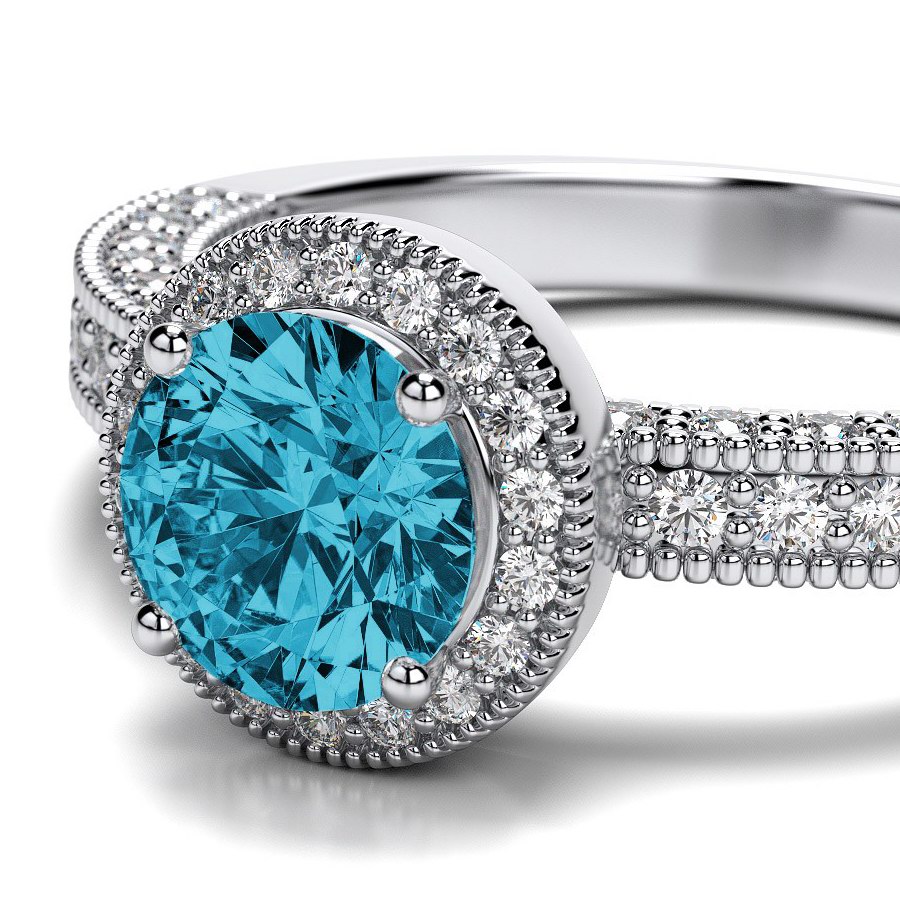 |
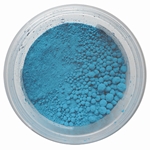 |
| "Blue Topaz" is the colour of the lovely eponymous cut gem and also of some bright sunlit seas. | Topaz comes in various colours but this is the "Blue" form. There is some variation in colour within this form but this is quite typical. Note that this is the colour of the cut stone in good light. | PB36 may either "Cobalt Chromite Blue Green Spinel" or "Zinc Cobalt Chrome Aluminum Spinel". They come in a variety of hues and shades depending on modifiers. This is the raw powdered pigment of "Cobalt Topaz Blue", PB36, available from FineArtStore.com |
| Sea Green | Sea Green | Colorado Spruce "Glacier Blue" |
| HSB 190°, 100%, 60% RGB 0, 127, 153 |
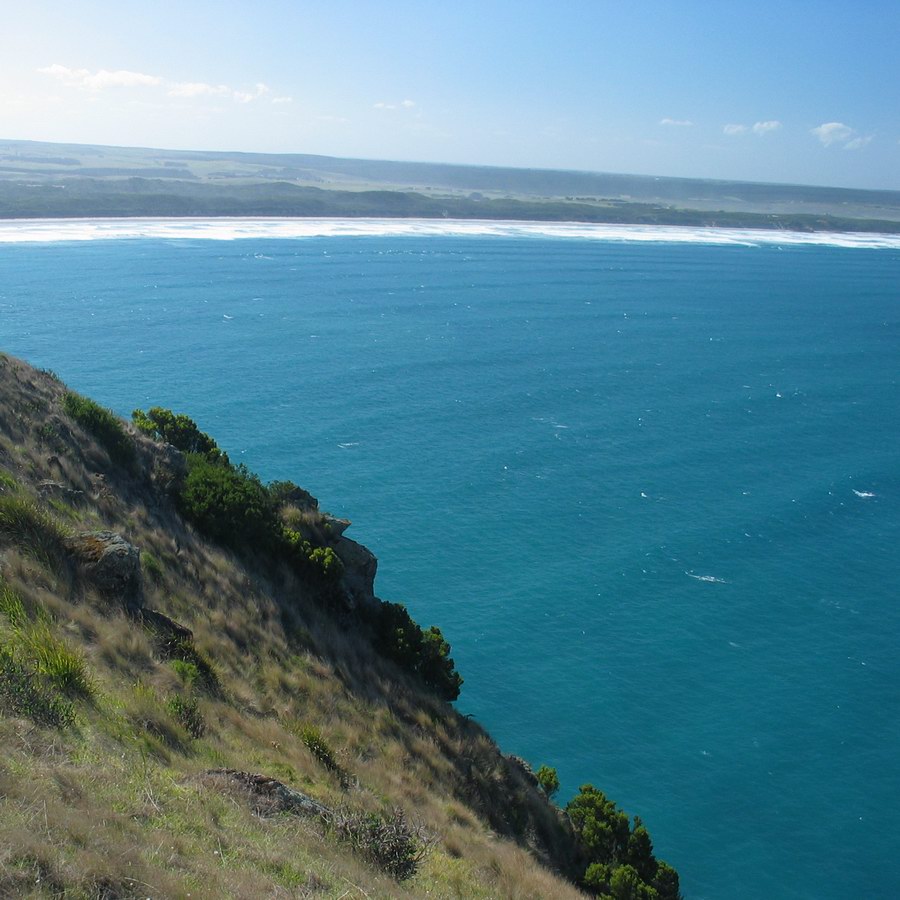 |
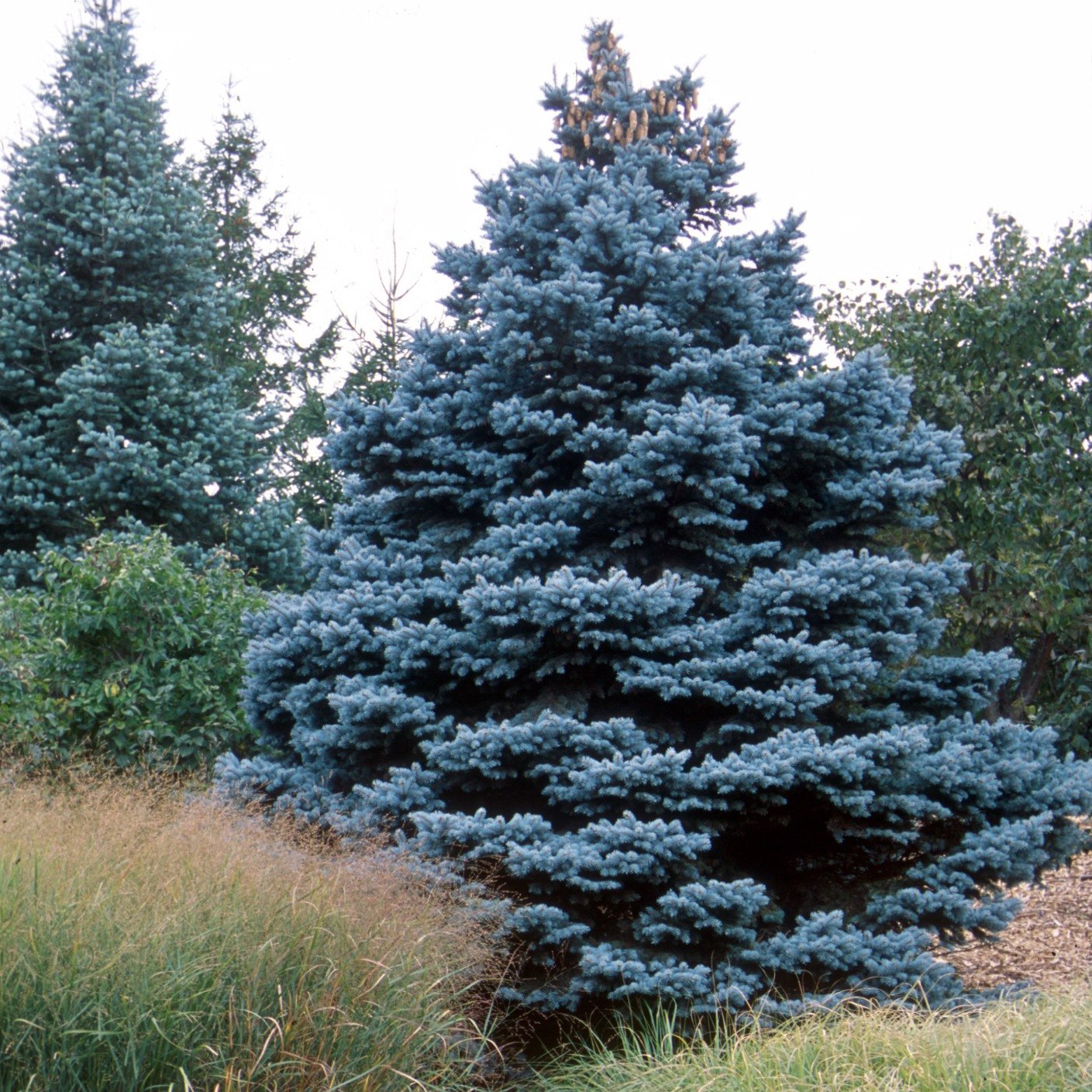 |
| "Sea Green" is one of the common colours of a sunlit sea. Cloudy seas can be grey or muddy in hue. | The most common hue of sunlit seas is Turquoise, although in some seas that may be Azure. This is the lighter of the two dominant shades of "Sea Green". Note that there are at times seas of "Blue Topaz" but such seas are unusual. | Colorado Spruces vary in colour depending on the culivar. "Glacier Blue" is the bluest spruce I've ever seen if this picture is a fair representation... |
| Dark Sea Green | Dark Sea Green | Missing |
| HSB 190°, 100%, 31% RGB 0, 66, 79 |
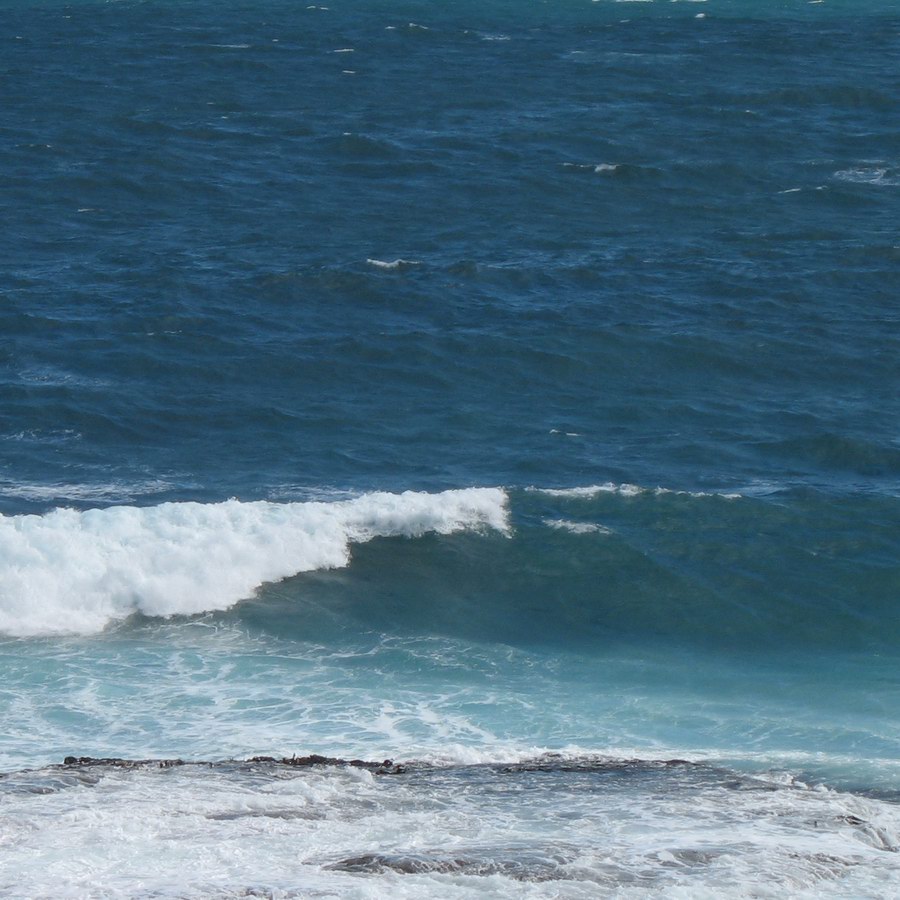 |
 |
| "Dark Sea Green" is one of the common colours of a sunlit sea. | The most common hue of sunlit seas is Turquoise, although in some seas that may be Azure. This is the darker of the two dominant shades of "Sea Green". | If you find another natural object of the colour swatch on the left please email me. |